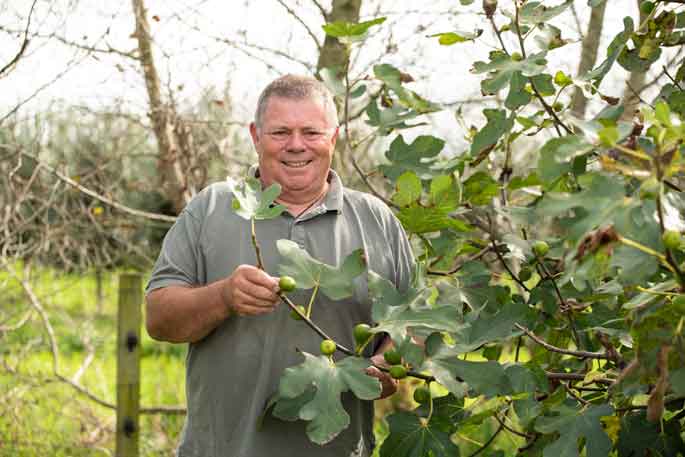For the president of the New Zealand Feijoa Growers Association and small-scale grower Roger Matthews, the move from a long career in local government management to growing feijoas wasn’t as huge as it may seem.
He is a trained scientist and is both interested in and understands the complexities of growing orchards, from genetics to the study and control of pests endangering the industry.
“The association acts as an advocate for feijoa growers, working with Horticulture NZ to get market access, establish industry standards, sharing information with growers, and applying for research grants,” says Roger.
Threats to Feijoas
Feijoas are grown throughout the North Island, and in Canterbury, Nelson, and Marlborough.
The guava moth is a monitored pest threat to feijoas.
It has been in the country for around 20 years and is slowly moving south.
It can also decimate other crops such as macadamia, pears and citrus and is common in Northland and Auckland.
“The NZFGA were granted $300,000 from the Sustainable Farming Fund for research into the guava moth.
“The moth originated in Australia and was possibly brought over by wind.
“It isn’t an issue over there so we assume they must have a predator that keeps numbers down.”
Roger believes the research should be carried out in Australia, but unfortunately this type of grant can only be used in New Zealand.
“We’ve tried pheromone traps, but they only attract males, and it only needs one male to mate with hundreds of females, so it is ineffective scientifically.”
Trapping programmes around the triangle of Ohinewai, Whatawhata and Morrinsville have not caught any moths, and there is no evidence of it in crops, so it is believed that they have not moved into the Waikato region as yet.
A PhD research project is being carried out to identify attractants to the fruit food sources, with a potential outcome of chemically re-creating them to encourage females to lay where there is no food source, and their larvae die.
Weather and fungi
“The aggressive fungi pathogen anthracnose attacks several soft fruit varieties and thrives in the humid, warmer temperatures in the Far North around Kerikeri.
“Research has been carried out and has found fungicides that may be effective, but work needs to be carried out with them to determine appropriate withholding periods before one can be licensed.”
Roger has been a full-time grower since 2018 on his eight-hectare block near Morrinsville.
He grows feijoas, figs, macadamia, and chestnuts and is a one-man band, carrying out all the maintenance and harvesting himself.



0 comments
Leave a Comment
You must be logged in to make a comment.